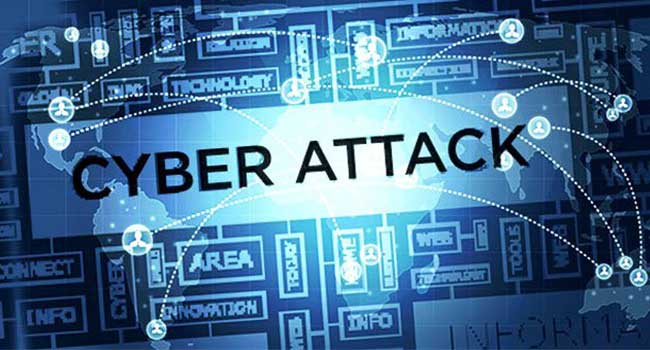
World's Critical Infrastructure Suffered 13 Cyber Attacks Every Second in 2023
In the last year, the world’s critical infrastructure – the medical, power, communications, waste, manufacturing, and transportation equipment that connects people and machines – has been under near-constant attack. Forescout Research – Vedere Labs recorded more than 420 million attacks between January and December 2023. That is 13 attacks per second, a 30% increase from 2022.
Forescout, a global cybersecurity provider, unveiled the global findings of recorded attacks in its Adversary Engagement Environment (AEE) in the new report, “2023 Global Threat Roundup.” The AEE is maintained by Vedere Labs, a leading global team dedicated to uncovering vulnerabilities in and threats to critical infrastructure.
Despite the formidable challenges posed by the ongoing surge in cyber-activity, there is an optimistic path forward. Elisa Costante, VP of Research at Forescout Research – Vedere Labs, highlights the potential for positive change, stating, “While it’s true that current efforts have fallen short in fully harnessing crucial technology to fortify critical assets and assess risks, there is an opportunity for improvement.”
Here are the top five insights from Forescout Research:
1. Not Yet Dormant: Log4j Dampens Software Library Exploits
Exploits against software libraries are witnessing a decline due to the waning popularity of Log4j exploits. This lull has given rise to a surge in exploits targeting network infrastructure and Internet of Things (IoT) devices.Among the IoT landscape, the spotlight falls on IP cameras, building automation systems, and network-attached storage, emerging as the most sought-after targets for malicious actors.Only 35% of exploited vulnerabilities made an appearance in the Cybersecurity and Infrastructure Security Agency’s (CISA) Known Exploited Vulnerabilities (KEV) list. This divergence emphasizes the need for a proactive and comprehensive approach to cybersecurity, transcending reliance on known vulnerability databases.
2. OT Protocols Bear the Brunt
Operational Technology (OT) finds itself under relentless assault, with five key protocols bearing the brunt of persistent attacks. The primary targets include protocols used in industrial automation and power sectors, such as Modbus, subject to a staggering one-third of all attacks, closely followed by Ethernet/IP, Step7, and DNP3, each accounting for approximately 18% of the onslaught. IEC10X rounds out this list with 10% of attacks, leaving the remaining 2% distributed among various protocols, with BACnet emerging as the majority.Building automation protocols, such as BACnet, experience less frequent scans. However, the relative scarcity of scans belies an alarming trend—targeted exploits against vulnerabilities in building automation devices are more prevalent.
3. Post-Exploitation Tactics Shift
Persistence tactics mark a 50% surge from 3% in 2022, along with discovery (roughly 25%) and execution (the other roughly 25%). While most observed commands used by threat actors remain targeted at generic Linux systems, a notable trend involves specific commands executed for network operating systems found on widely used routers.
4. Malware Families Remain Strong
Malware families persist as formidable threats. The Agent Tesla Remote Access Trojan (RAT) commands a significant 16% share of observed malicious activity. Following closely are variants of the Mirai botnet, comprising 15%, and the Redline info stealer, holding its ground at 10%.Among command-and-control servers, Cobalt Strike emerges as the undisputed leader, commanding a substantial 46% share, trailed by Metasploit at 16%, and the emerging Sliver C2 at 13%. Most of these servers are in the United States, constituting 40% of the global landscape, with China and Russia following at 10% and 8%, respectively.
5. Threats Unleashed Across 163 Countries
Threat actors have cast a digital net far and wide, impacting 163 countries. The United States stands as the primary target, bearing the brunt with 168 malicious actors setting their sights on the nation. Other countries include the United Kingdom (88), Germany (77), India (72), and Japan (66).The usual suspects boast high concentrations of threat actors: China (155), Russia (88), and Iran (45), collectively representing nearly half of all identified threat groups. The crosshairs of these malicious entities are predominantly fixed on three key sectors: Government, Financial Services, and Media and Entertainment. As the primary pillars of societal infrastructure, these industries are at the forefront of cyber warfare, emphasizing the need for heightened security measures and collaborative efforts.
Costante continues, “The key lies in achieving comprehensive visibility, ensuring real-time contextual awareness of every device, whether managed or unmanaged. By doing so, large enterprises can transition from a reactive defense posture to a more proactive approach, steering clear of the futile game of security whack-a-mole. This shift towards enhanced visibility and proactive defense strategies signals a brighter outlook for critical infrastructure.”
For more information, download the full report here.